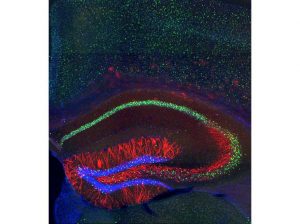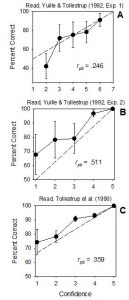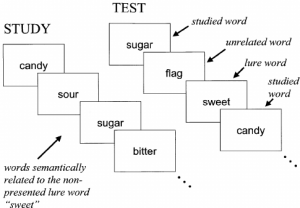MADELEINE YU | SQ ONLINE | REPORTER 17-18
Recalling the right information can change everything. In the late 1990s, psychiatrists and psychologists all over the nation faced lawsuits for malpractice when patients under their care began to recover memories of childhood sexual abuse. While they were convinced that these memories were their own, many were, in fact, false. Somehow, the methods used by the psychiatrists and psychologists had induced patients with a plethora of mistaken events. Yet despite this nationwide scandal, false memories persist today.
In 2013, Steve Ramirez and his team from MIT studied the brains of mice to locate the area where false memories form and came upon the hippocampus. The neurons within the CA1 region, thought to be critical in long-term memory, first encoded a memory of a particular context and were later reactivated via optogenetics during a fear-conditioning context. This recontextualization resulted in increased freezing when placed in the original environment where no foot shock had been administered. It was a case of mistaken recall.

Today, two researchers from UC San Diego are studying ways to mitigate the propagation of false memories. Dr. John Wixted has done extensive research on eyewitness memory and its connection to confidence ratings. When the perpetrator of a crime is identified by a victim during a lineup, there are many factors at play. The passage of time from the incident to the lineup and whether the questions are leading or open-ended can reconstruct the facts to resemble an entirely new event. Yet to the eyewitness, it will wear the familiarity of a personal memory.

As it was the case with Ramirez’s recontextualization of hippocampal neurons, eyewitness memory can also become distorted through reactivation of the same neurons involved in consolidating the original event. It makes sense that the longer the time from the incident, the less reliable one’s recall becomes. However, it is also the case that memories that aren’t given time to distort are closer to the truth.
Wixted first went over old cases in which eyewitnesses reported confidence in their identification of a suspect. While confidence had been discounted at the time due to a low average correlation to accuracy. Wixted found there was more to the story when accuracy was re-plotted as a function of confidence. In fact, those who had reported high confidence in their identification were more accurate. On the other hand, those who reported low confidence were more error-prone. In January of this year, the United States Department of Justice referred to Wixted and his colleagues’ research and promoted the consideration of early confidence ratings as a valid measure of accuracy during eyewitness identification.
Dr. Angela Lowe, a researcher in the Wixted lab, is going further to examine if it is possible to recognize a false memory. To do this, she provides participants with a list of related words in what is known as the Deese-Roediger-McDermott (DRM) paradigm. For example, the list: rest, awake, dream, yawn, drowsy, nap, peace, and snooze all point towards the critical lure of sleep. After studying the list, the participants are asked to recognize words. Often, those given the list above recall the word sleep to be among those they had studied. In essence, the recollection of a critical lure is akin to that of a false memory; although the word was never studied, it is just familiar enough to make participants certain they had seen it before–even if they are well aware of the critical lure effect.
To Lowe, this doesn’t seem fair. In all other sensory modalities, one has the benefit of feedback. The senses of the present allow for the correction of mistakes that are made in split-second moments and give us a more accurate picture of reality. With memory, it is an entirely different story. Not only are memories malleable, but they are also colored through the lenses of context, expectations, and even the current state of mind. Even if a group of people were placed in the same room, everyone would see their surroundings differently and subsequently leave with different memories.

To combat this, Lowe tests participants’ memory of the lists with the addition of instant feedback given by a computer. If a word is incorrectly identified as a studied item, the participant is notified at once. She hopes the addition of external feedback will not only improve performance on the task, but will also allow participants to subjectively learn how to tell the difference between an actual memory and a fabricated one. Performance on the DRM paradigm should thus improve with time. While more data still needs to be collected at this point, early results are promising.
Training for false memory recognition would not only enable better retention of facts, but would also promote greater awareness of mistakes and cautiousness in thought. Knowing the difference between the truth and what is remembered is essential to how we perceive reality, others, and ourselves, and offers the ability of wiser decisions. Perhaps there will even be less risk of wrongful convictions. The inner workings of the mind will certainly continue to perplex researchers and non-researchers alike, but the addition of external tools may be the aid necessary to win this battle for truth.
[hr gap=””]
Resources
- http://journals.sagepub.com/doi/abs/10.1177/1529100616686966
- https://www.psychologicalscience.org/publications/observer/obsonline/justice-department-turns-to-psychological-science-to-improve-eyewitness-identifications.html#.WVv–ojyvD5
- https://www.psychologytoday.com/blog/the-new-resilience/201612/new-research-shows-why-people-believe-false-information
- http://www.sesp.northwestern.edu/news-center/news/2016/08/why-we-fall-prey-to-misinformation.html
- http://science.sciencemag.org/content/341/6144/387
- http://www.smithsonianmag.com/innovation/meet-two-scientists-who-implanted-false-memory-mouse-180953045/?no-ist=&fb_locale=en_GB&page=1
- http://journals.sagepub.com/doi/figure/10.1177/1529100616686966?
- https://www.researchgate.net/figure/11036867_fig1_Fig-1-Schematic-representation-of-the-DeeseRoediger-McDermott-DRM-paradigm